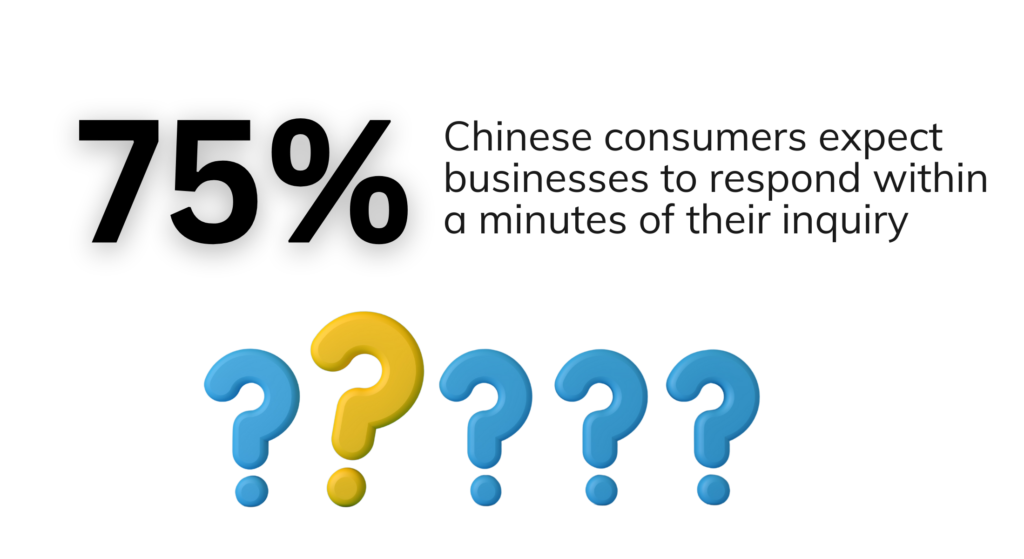Text messaging has emerged as a powerful tool in China’s rapidly evolving mobile commerce landscape. With over 1 billion smartphone users and a tech-savvy consumer base, messaging offers businesses a direct and effective way to engage with customers and drive sales. This blog explores the rise of sms in China, its impact on mobile commerce, and strategies businesses can use to leverage this medium to boost sales

Understanding Chinese Consumer Preferences
Chinese consumers have unique preferences shaped by cultural, social, and technological factors:
- Speed and Convenience: Chinese consumers prioritize quick and convenient shopping experiences. They value fast transactions and timely updates.
- Personalization: Tailored recommendations and personalized offers resonate well with Chinese shoppers.
- Trust and Transparency: Clear communication about product details, order status, and customer service is crucial.
- Mobile-First Approach: With over 1 billion smartphone users, mobile is the primary channel for online activities, including shopping.
Gaps That Text Messaging Can Fill
Despite the advanced digital ecosystem in China, certain gaps can be effectively addressed through messaging:
Real-Time Engagement
Many Chinese consumers seek immediate responses to their queries and concerns. Messaging offers instant communication, ensuring timely engagement.
Example: A study found that 75% of Chinese consumers expect businesses to respond within 5 minutes of their inquiry. Text messaging can meet this expectation more effectively than email or phone calls.

Personalized Marketing
While many platforms offer personalized recommendations, text messaging allows for highly targeted and direct marketing based on user behavior and preferences.
Example: Tmall, an Alibaba platform, uses text messaging to send personalized promotions during peak shopping times, resulting in higher engagement rates.
Order and Delivery Updates
Keeping customers informed about their order status is vital. Text messaging provides real-time updates, reducing anxiety and enhancing the shopping experience.

Customer Feedback
Collecting feedback through text messages is more immediate and convenient for consumers, leading to higher response rates compared to other methods.
Case Study: JD.com uses text messaging to gather post-purchase feedback, which helps in improving their services and customer satisfaction.
Do you want to choose the right communication channel for your business?“
Leveraging Text Messaging to Boost Sales
To capitalize on the potential of text messaging, businesses should adopt the following strategies:
Promotional Campaigns
Send time-sensitive promotions and discounts via text messages to create urgency and drive immediate purchases.
Example: During the Singles’ Day festival, retailers like Suning sent out flash sale notifications via text, resulting in a significant sales spike.

Personalized Offers
Use data analytics to understand customer behavior and send personalized text messages that cater to individual preferences.
Example: Electronics retailer Suning personalizes their text message offers based on previous purchases, increasing conversion rates.

Order Status Updates
Provide real-time updates on order processing, shipping, and delivery to keep customers informed and satisfied.
Interactive Customer Support
Implement AI-powered chatbots and live support through text messaging to resolve issues quickly and efficiently.
Case Study: Xiaomi’s customer service via text messaging has led to quicker resolution times and higher customer satisfaction ratings.
Surveys and Feedback
Use text messaging to conduct quick surveys and gather customer feedback, enabling continuous improvement in products and services.
Example: Alibaba uses text messaging to solicit customer feedback, helping them fine-tune their offerings and customer service.
Best Practices for Leveraging Text Messaging in China
To effectively leverage text messaging in China’s mobile commerce landscape, businesses should follow these best practices:
Compliance with Regulations
Ensure compliance with China’s telecommunications regulations. Obtain the necessary permissions before sending promotional messages and provide clear opt-out options to recipients.
Segmentation and Targeting
Segment your customer base and target messages based on demographics, purchase history, and preferences. This ensures that your messages are relevant and resonate with the recipients.
Clear and Concise Messaging
Keep your messages clear, concise, and to the point. Chinese consumers appreciate brevity and directness, especially in text messages.
Timely and Relevant Content
Send messages at appropriate times and ensure the content is relevant to the recipients. Avoid sending messages during off-hours or holidays unless they are highly relevant to the occasion.
Personalization
Personalize your messages by addressing recipients by their names and tailoring the content based on their preferences and behavior. This personal touch enhances engagement and conversion rates.
Incentives and Call-to-Action
Include compelling incentives and clear call-to-action in your messages. Whether it’s a discount code, limited-time offer, or a special promotion, ensure that the recipients know what action to take.
Track and Analyze Performance
Monitor the performance of your text messaging campaigns by tracking key metrics such as open rates, click-through rates, and conversion rates. Use these insights to refine your strategies and improve future campaigns.
How CRM-Messaging Can Help
CRM-Messaging provides comprehensive solutions to integrate text messaging into your sales strategy:
Seamless Integration: Easily integrate text messaging with your CRM system, ensuring a unified customer experience.
Personalized Campaigns: Use advanced analytics to create targeted text messaging campaigns that resonate with Chinese consumers.
Automation: Automate routine tasks and customer interactions with AI-powered text messaging, freeing up resources for more strategic activities.
Real-Time Insights: Gain real-time insights into customer behavior and campaign performance, enabling data-driven decision-making.
Conclusion
The rise of mobile commerce in China presents vast opportunities for businesses to connect with consumers. Leveraging text messaging can help address specific consumer preferences and fill existing gaps, enhancing engagement and boosting sales. With platforms like CRM-Messaging, businesses can effectively implement text messaging strategies and thrive in this competitive market.






